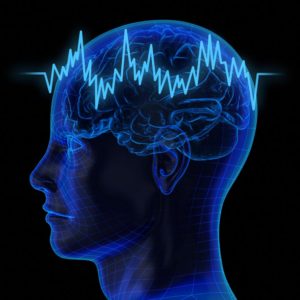Abstract
Episodic memory in older adults is varied and perceived to rely on numbers of synapses or dendritic spines. We analyzed 2157 neurons among 128 older individuals from the Religious Orders Study and Rush Memory and Aging Project. Analysis of 55,521 individual dendritic spines by least absolute shrinkage and selection operator regression and nested model cross-validation revealed that the dendritic spine head diameter in the temporal cortex, but not the premotor cortex, improved the prediction of episodic memory performance in models containing β amyloid plaque scores, neurofibrillary tangle pathology, and sex. These findings support the emerging hypothesis that, in the temporal cortex, synapse strength is more critical than quantity for memory in old age.
INTRODUCTION
Episodic memories define the past from the present and provide humans with a recollection of personal experiences. Deficits in episodic memory are observed following injury to the temporal cortex, and these cognitive functions decline at varying degrees as humans age or experience neurodegenerative disease (1–3). Dendritic spines serve as the postsynaptic compartment for most excitatory synapses in the brain, and synapse strength is inseparably linked to spine morphology. Spine loss occurs naturally throughout mammalian aging in brain regions that are critical for memory processes (4, 5). In Alzheimer’s disease (AD), loss of spines or synaptic markers correlates more strongly with memory impairment than β amyloid (Aβ) plaques or neurofibrillary tangles (NFTs) (6–9). These findings have collectively fueled the long-standing hypothesis that decreased density of spines or synapses accounts for the decline in memory abilities among older adults. However, spines are lost through the natural course of aging (4, 5, 10). Therefore, we hypothesized that there must be features of dendritic spines or synapses that contribute to memory ability in old age that are distinct from the natural progression of spine loss or the accumulation of common age-related neurodegenerative pathologies, like Aβ plaques. Thus, we sought to identify features that predict episodic memory function in old age.
RESULTS
Dendritic spines were sampled and analyzed from the frontal and temporal cortex
Postmortem samples of Brodmann area (BA) 6 superior frontal gyrus within the premotor cortex and BA37 inferior temporal gyrus (ITG) within the temporal cortex were obtained from 128 individuals from the Religious Orders Study and Rush Memory and Aging Project (ROSMAP). Cases were 90.53 ± 6.06 (mean ± SD) years of age, with variable cognitive performance scores and AD-related neuropathology. To measure dendritic spine density and morphology, BA37 and BA6 tissue slices were imaged at 60X using bright-field microscopy with a high–numerical aperture (NA) condenser. Z-stacks were reconstructed in three dimensions using Neurolucida 360 (Fig. 1 and fig. S1). All dendritic spine data are provided in tables S1 and S2.
Dendritic spine head diameter in the temporal cortex improves model prediction of episodic memory scores
BA37 and BA6 dendritic spine datasets were individually run through a supervised learning algorithm (11) to determine if specific dendritic spine features dictate episodic memory performance beyond the effect of other traits, including AD-related neuropathology (Fig. 1). Both dendritic spine datasets were split into a discovery set (n = 63) and a validation set (n = 62); three cases were removed due to missing scores of AD pathology and/or memory performance. Least absolute shrinkage and selection operator (LASSO) regression was performed on the discovery set to determine which dendritic spine features were most strongly associated with episodic memory function. First, the penalty factor (λ) was selected by performing 1000 iterations of 10-fold cross-validation for 100 values of λ. The penalty factor was then applied to each variable during LASSO regression to calculate the coefficient for each variable, which indicates the relative contribution of each dendritic spine feature to episodic memory performance. The validation set was used to confirm the results of LASSO regression by performing nested model leave-one-out cross-validation. Multiple models for predicting episodic memory were tested to determine which combination of variables best predicts episodic memory function. Last, correlations between dendritic spine parameters and cognitive and pathology scores were calculated using the complete dataset for each brain region individually.
In the discovery set, LASSO regression identified BA37 spine head diameter as having the strongest association with episodic memory score (Fig. 2A and fig. S2, A and B). Nested model cross-validation was then used to replicate the regression model in a separate validation set by comparing linear models. The full model contained age; measures of neuritic Aβ plaques and NFTs; sex; and spine density, length, head diameter, and volume (Fig. 2B). Age was included on the basis that cognitive decline occurs with age (12). Aβ plaques and NFTs accumulate with age and AD progression (13) and can influence memory function. Sex was included in the model because, in this sample, males were found to harbor significantly less neuritic Aβ plaques and NFTs than females (fig. S2, C and D).







